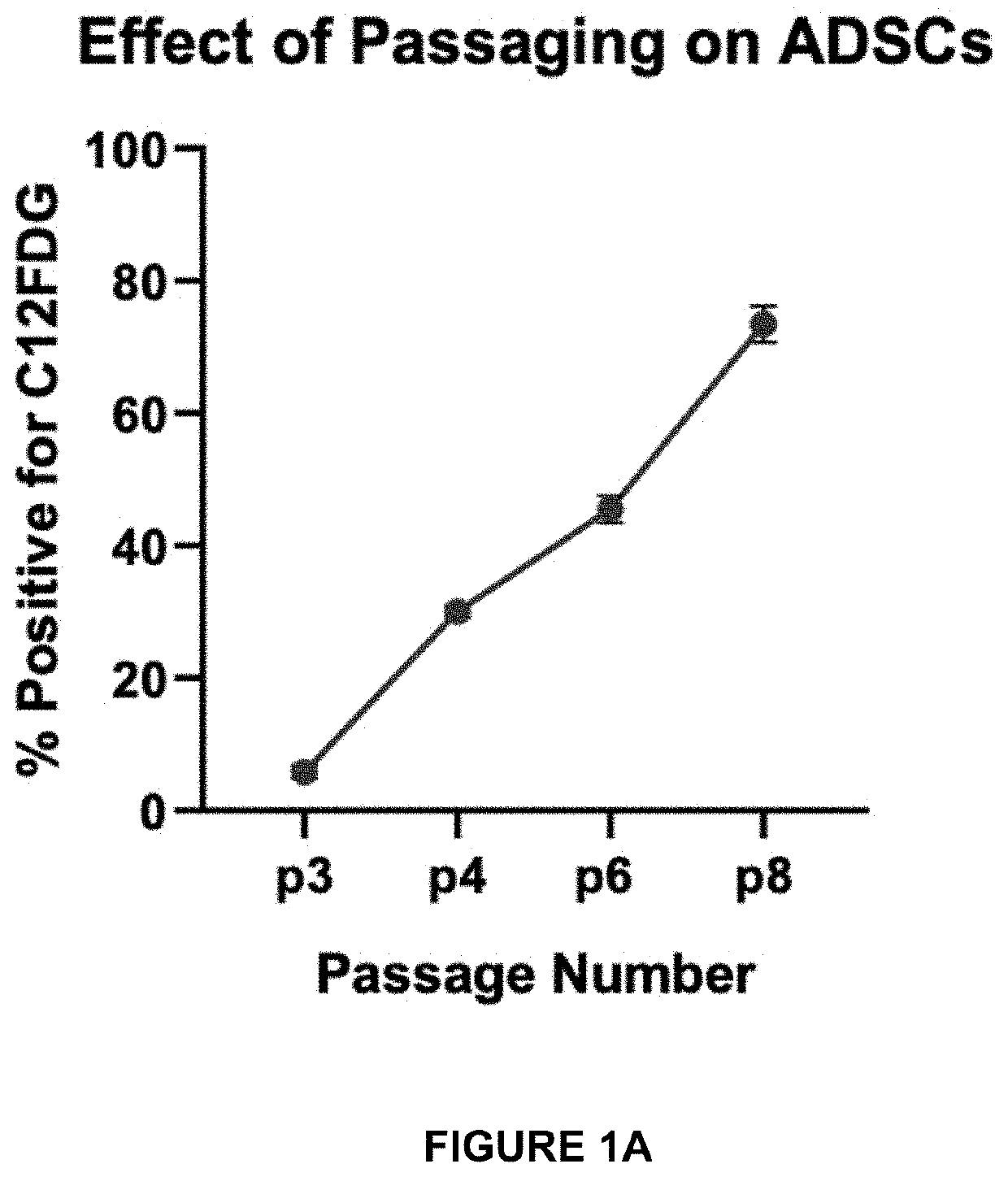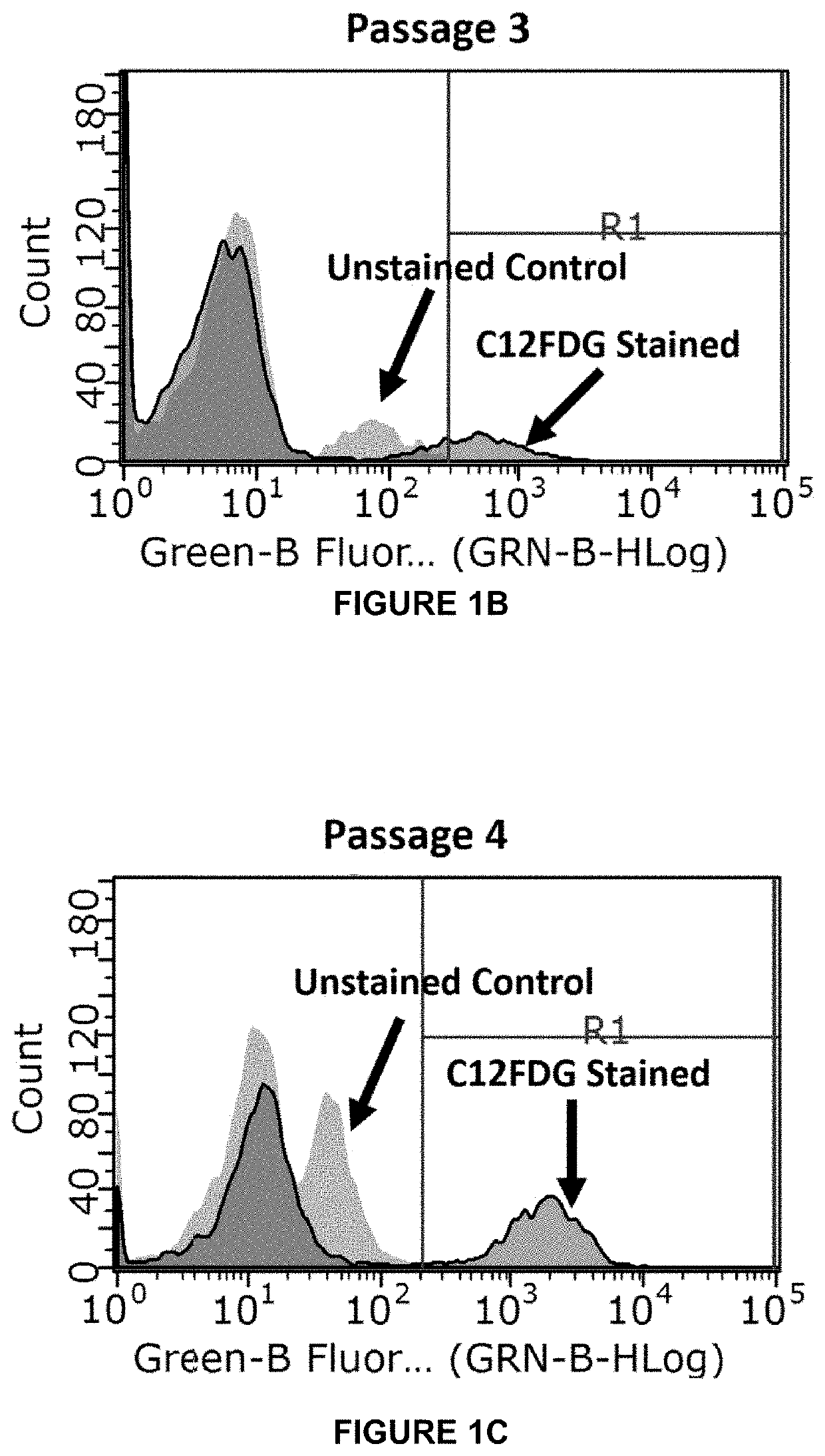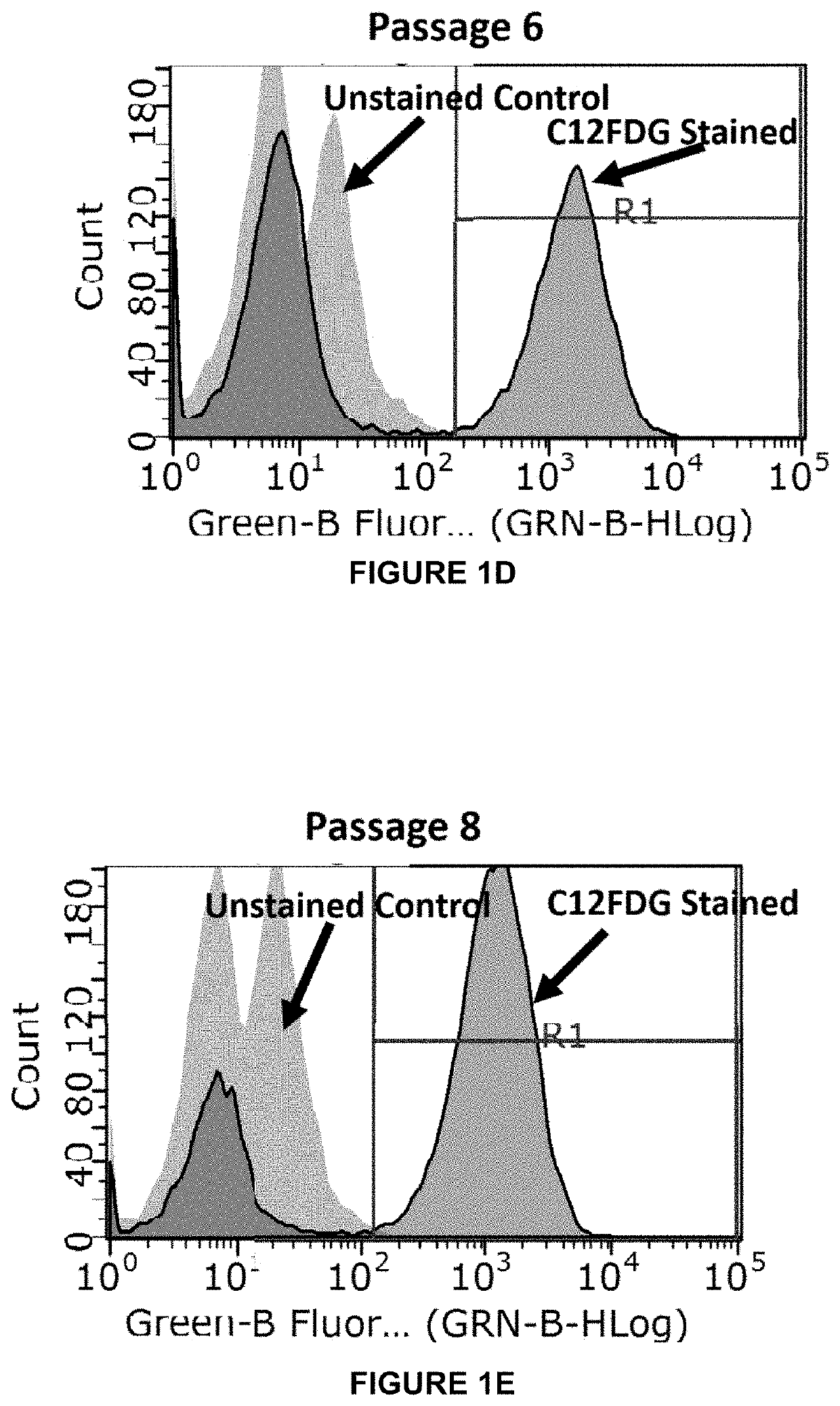Methods for treating disease associated with senescence
a technology of senescence and treatment methods, applied in the field of senolytic agents, can solve problems such as loss of tissue repair capacity
- Summary
- Abstract
- Description
- Claims
- Application Information
AI Technical Summary
Benefits of technology
Problems solved by technology
Method used
Image
Examples
example 1
s Accumulate Senescence Upon Ex Vivo Culture Expansion
[0077]Serial passaging (expansion) increases cellular senescence in ADSCs. Senescence is detected in ex vivo-expanded cells. Because the re-injection of stem cells comprising senescent cells is undesirable, cells were evaluated for senescence after each passage. In order to determine the effect of culture expansion of adipose derived stem cells, passage 2 cells were thawed and cultured to passage 8. The cells were maintained in T-75 or T-175 culture flasks using normal growth media (DMEM:F-12 with 10% FBS and 1% penicillin / streptomycin). At 70-90% confluency, the cells were passaged and reseeded in the flasks at a 1:4 dilution. To test for senescence at passage 3, 4, 6, and 8, cells were plated in 12-well plates in triplicate at a density of 40,000 cells / well. After adhering overnight, the cells were treated with 100 nM of bafilomycin A1 for 1 hour at 37° C. and 5% CO2. Next, 33 μM C12FDG was added and incubated for 2 hours. The ...
example 2
reatment is Non-Toxic to Healthy Stem Cells
[0083]Fisetin is a natural flavonoid found in many fruits and vegetables. It is a known antioxidant and reducing agent due to its hydroxyl groups. It has been shown to reduce the secretion of several proinflammatory factors and has anti-cancer activity, blocking the mTOR and PI3K / AKT pathway, making Fisetin a strong therapeutic for targeting senescent cells. Fisetin has the molecular formula C15141006, molecular weight 286.24 g / mol, CAS name / number: Fisetin, 2-(3,4-dihydroxyphenyl)-3,7-dihydroxychromen-4-one, 528-48-3, and chemical structure:
[0084]Since it would be deleterious to kill healthy, non-senescent cells when treating with Fisetin, it was necessary to determine the optimal Fisetin dose. In an effort to determine this concentration, healthy, low passage ADSCs were used to ensure no healthy cells were dying.
[0085]Reagents included ADSC culture media (CM) (DMEM-F12, Gibco #11320; 10% FBS, Gibco #16000044; 1% Penicillin Streptomycin, G...
example 3
reatment Results in Senescent Stem Cell Reduction
[0095]Immunosuppressors such as rapamycin have previously been shown to reduce cellular senescence while improving myogenic and chondrogenic differentiation in muscle-derived stem cells from progeroid mice. Thus, the senolytic agent and antioxidant Fisetin was studied for lowering senescence in ADSCs from aged, culture-expanded, and banked cells.
[0096]Adipose derived stem cells (ADSC), among other stem cells, can be promising tools for tissue regeneration and the prevention of age-related musculoskeletal degeneration. However, these age-related conditions also affect the ADSC populations in the form of cellular senescence. These senescent ADSCs, when isolated from senior individuals and / or culture-expanded and banked, can lead to a significant loss in therapeutic potential. Thus, there is reason to eliminate these cells during culture expansion, if a viable stem cell bank is to be generated for patients.
[0097]The use of senolytics has...
PUM
| Property | Measurement | Unit |
|---|---|---|
| Fraction | aaaaa | aaaaa |
| Fraction | aaaaa | aaaaa |
| Fraction | aaaaa | aaaaa |
Abstract
Description
Claims
Application Information
 Login to View More
Login to View More - R&D
- Intellectual Property
- Life Sciences
- Materials
- Tech Scout
- Unparalleled Data Quality
- Higher Quality Content
- 60% Fewer Hallucinations
Browse by: Latest US Patents, China's latest patents, Technical Efficacy Thesaurus, Application Domain, Technology Topic, Popular Technical Reports.
© 2025 PatSnap. All rights reserved.Legal|Privacy policy|Modern Slavery Act Transparency Statement|Sitemap|About US| Contact US: help@patsnap.com



